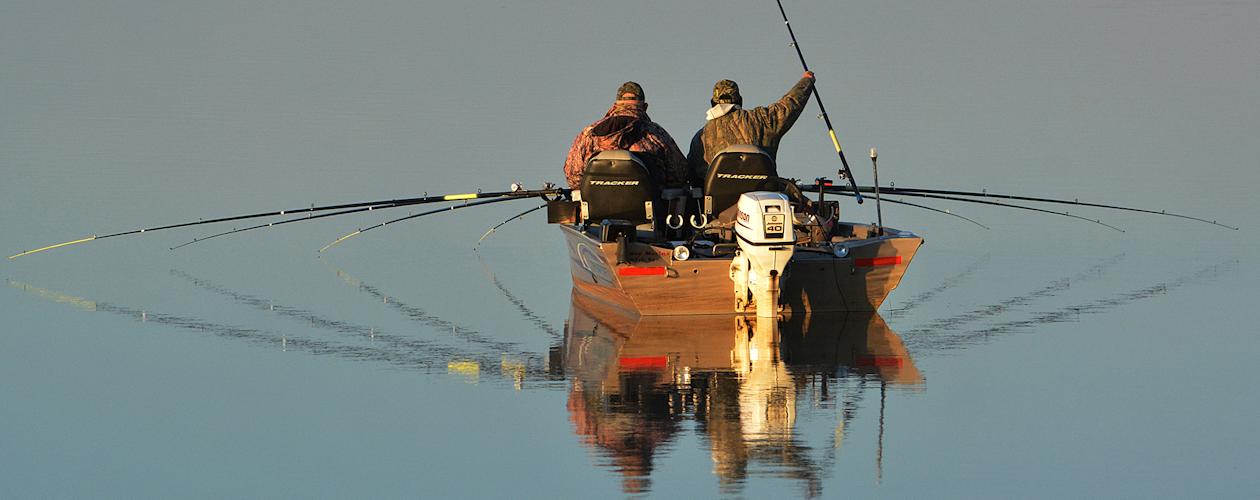Mayfly Hatches Continue as Catfish Bite Heats Up; TVA Drawdown Begins
Written by Steve McCadams - Published on June 28, 2023
The threat of a three-digit heat index has entered into the equation of Kentucky Lake’s summer fishing scene. Everyone is talking about the hot weather and listening to the weatherman resembles the old days of listening to a broken record!
Tuesday signals the arrival of the Fourth of July. It’s supposed to be hot! Right?
Meanwhile, fishermen---at least some of them---have been taking it in stride and rising early to hit the water around daybreak. That’s about all one can do to beat the heat nowadays.
Actually, the early morning hours haven’t been too bad. If there’s a little breeze and cloud cover the first few hours of the morning aren’t too bad out there. Best to hit the water early and toss in the towel by midday.
Lake levels have been relatively stable this week but that’s about to change. Tennessee Valley Authority will implement its annual drawdown beginning July 1. That means a slow but gradual decline in lake levels in the weeks and months ahead.
This week the reservoir’s elevation was around 359.2, which was similar to last week at this time. TVA’s drawdown will continue throughout the summer and fall until the reservoir reaches winter pool elevation of 354 range around late November or early December.
TVA’s curve for reservoir management sees the drawdown begin in order to create more storage capacity within the reservoir.
Surface temperatures this week have warmed to the 82 to 85 degree range and could climb another degree or two by later this weekend. Water color remains clear all across the reservoir.
Catfishermen yearning for more current out on the main river channel area should get their wish as discharge rates at Kentucky Dam had already increased this week compared to the previous week. TVA was pushing around 46,000 cubic feet per second (cfs), which is an increase over most of July.
No doubt increased power demands will see more water moving through the Tennessee River system as the agency will be needing more hydro power during the hot days ahead.
The summer catfish bite should see improvement these next few days. Once the steady current kicks in each day the schools of shad will be more active and roaming about feeding on plankton. That will result in increased activity from the schools of channel and blue catfish.
Out on the edge of the main river channel and on humps or irregular topography at the mouth of big bays will see the bite turn on. Anglers bottom bumping or following the schools of shad while closely observing their sonar units should come into contact with some hungry catfish.
Bass fishermen should also benefit from the current as main lake ledges will be appealing to bass following their forage base.
Summer bass fishermen have already been stalking the main lake drop-offs and humps for several weeks but the bite has been inconsistent for most. That should improve now that moving water has entered the equation.
It should be a good time to toss big deep diving crankbaits along main lake sandbars. Also big Texas rigged worms, Carolina rigged worms, craws and lizards will be productive as will jig and craw combos and swim baits.
Mayfly hatches are underway and that can attract a lot of bass to relatively shallow island rims or treelaps along shorelines. Seems the flies always draw a variety of fish to their locale despite hot weather and warm surface temperatures.
Hatches always occur around the Fourth of July and should continue in the weeks ahead.
Some bass fishermen are already turning to night fishing in hopes of beating the heat. Tossing a big spinnerbait around steep rocky banks or along rip-rap shorelines will likely produce results.
The summer crappie bite hasn’t been all bad with a few scattered success stories coming in from anglers working the midrange depths of 12 to 15 feet. And, a few anglers have dropped back to even deeper brushpiles and various manmade fish attractors around 18 to 22 feet deep and taken some there.
Live minnows continue to produce but so have jigs. A lot of anglers are tipping their jigs with a live minnow to entice bites from finicky summer crappie who sometimes portray lethargic behavior in the aftermath of mayfly hatches.
When the flies hatch it suddenly delivers an abundant food source across the lake, especially in the larval stage that emerge from the lake bottom. Crappie and other fish gorge themselves on this natural buffet long before the adult flies are visible in flight.
The various stages of the mayfly offer an abundant food source to just about all the critters in and around the lake.
Another pattern producing a few crappie has been trolling techniques as boaters pull crankbaits out over main lake sandbars and deeper flats. Covering a lot of water helps anglers pick up scattered crappie, along with an occasional catfish and sauger.
During the peak of the mayfly hatch is a good time to catch a lot of species but especially bluegill and other sunfish. Using ultra-light tackle with small grubs, Rooster Tail spinners, crickets and worms will produce lots of action.
< Return to the Archives
< Return to Fishing Reports
< Return to Fishing Overview








